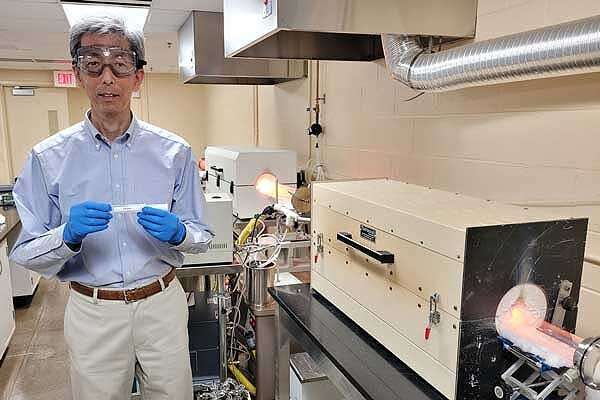Researchers working to shorten the lifespan of 'forever' chemicals

Scientists at the University of Dayton Research Institute are learning how to destroy PFAS—marking a significant step in the quest to remediate the toxic, long-lasting chemicals that have become a pervasive problem affecting humans and the environment.
Per- and polyfluoroalkyl substances—more commonly known as PFAS (pronounced pea' fas) —are human-made chemicals prevalent in a wide variety of commercial and consumer goods. With their non-stick and stain- and liquid-repellent qualities, PFAS are found in cookware, furniture and carpets, cosmetics, outdoor gear, building materials and a host of other products. And because they've proven highly effective in fire-suppressant foams, they're used extensively at military bases, airports, firefighter training facilities, ships and other places where fuel-based fires are common.
The problem is that these chemicals are toxic, and any runoff from the use of PFAS-based products leaches through the soil into the groundwater, said Takahiro Yamada, principal environmental chemist in UDRI's power and energy division.
"PFAS tend to be highly concentrated near locations where firefighting foam is used, but they have also been found in the air, water and soil virtually everywhere around the globe," he said.
"Compounding the problem is that the strong chemical bond that gives PFAS their appealing qualities for products also make them incredibly durable—they can last thousands of years, don't degrade naturally in the environment, and measures to destroy them have remained elusive, earning them a spot in the notorious list of 'forever chemicals,'" Yamada added.
The U.S Environmental Protection Agency, U.S. Department of Defense and other organizations have been pursuing remediation solutions for a number of years, because of the impact of PFAS to the environment and human health, Yamada added. But investigating PFAS destruction techniques has been challenging because of the vast number of substances; the CDC reports more than 9,000.
Working under a variety of federal and industry funding sources, however, Yamada and his colleagues have made important progress in determining the best conditions to completely destroy PFAS. Using a laboratory-scale incinerator, the researchers have tested a variety of heating techniques designed to break down the carbon-fluorine bonds responsible for PFAS' robustness.
"We burn the substances in a well-controlled environment, then collect and analyze the gas emissions to see if any PFAS remain and what kind of incineration byproducts are produced if they are not completely decomposed," Yamada said. "Each compound has different characteristics, so the process for destroying them may vary somewhat. But we've determined the key factors are incineration temperature and exposure time, with moisture level of the PFAS also affecting the conditions for complete destruction." The researchers are collaborating with the EPA to determine whether their test results are consistent with those of tests performed by the EPA using a pilot-scale incinerator.
"Based on our research, we've been able to suggest the optimum conditions to completely destroy PFAS under various conditions."
"Once PFAS gets into the ground water, it spreads to rivers, oceans and drinking water, which means it also gets into wastewater," Yamada said. "The process of wastewater treatment generates biosolids, which can be dried and incinerated to reduce volume or to produce electricity. The concern is whether burning PFAS-laden biosolids will release the PFAS into the atmosphere."
UDRI researchers are also studying PFAS destruction in a separate program funded by the semiconductor industry.
"PFAS containing organic solvents are used in the production and cleaning of semiconductors, and the chemicals are then collected and incinerated to treat PFAS," Yamada said. "Our industry funders want to understand whether the current burning process is sufficient to destroy the PFAS.
"Under these studies, we've been able to provide information to organizations that deal with PFAS on steps they can take to modify their systems or processes to help keep these substances out of the environment."
Provided by University of Dayton